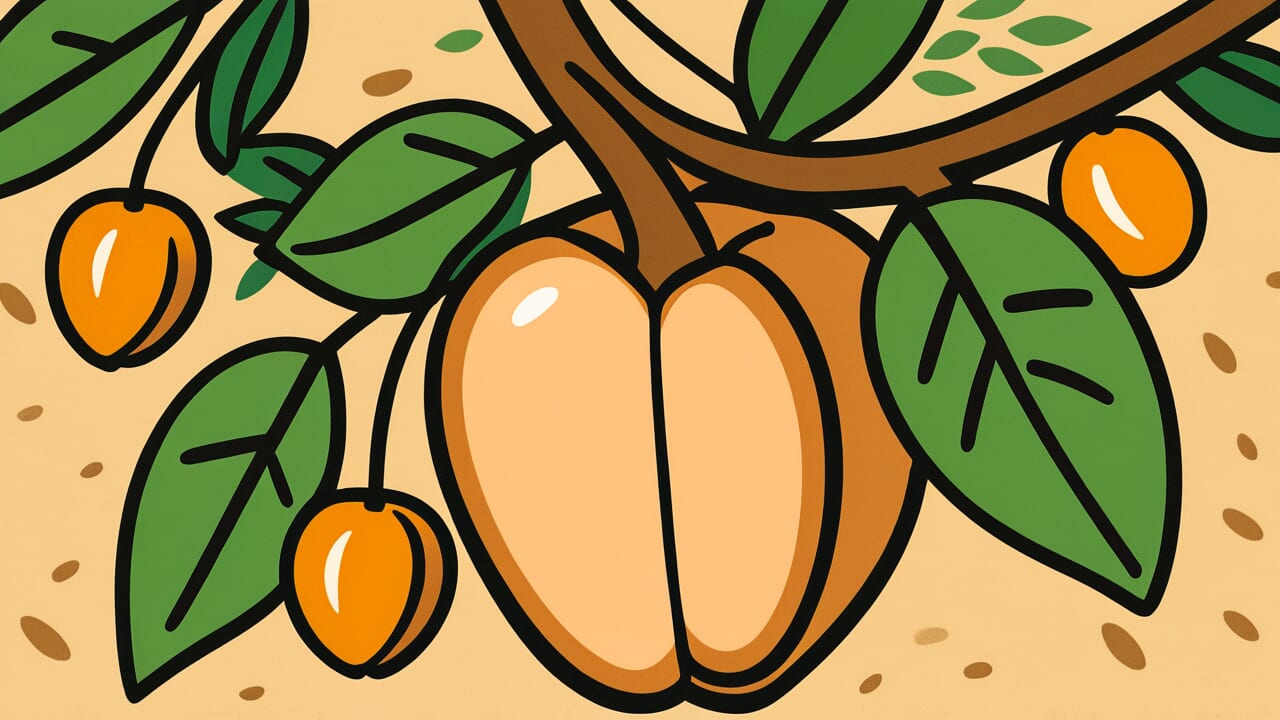How to Read “The fruit of the tree falls at the base of the tree”
Konomi wa konomoto
Meaning of “The fruit of the tree falls at the base of the tree”
“The fruit of the tree falls at the base of the tree” teaches that everything has a cause or source. Just as fruit falls near its tree’s roots, results always connect to their origins.
This proverb reminds us not to focus only on what we see in front of us. Instead, we should look for the causes and roots behind events.
When problems happen, we shouldn’t get caught up in surface-level issues. We need to calmly ask why something happened and where it started.
People use this saying when investigating troubles, understanding someone’s behavior, or analyzing social problems. It applies whenever we need to find the essence of something.
For example, you might say, “That person’s attitude today must have roots in past experiences.” This shows you’re looking for the fundamental reasons behind what you observe.
Modern society overflows with information. We often focus only on surface events. This proverb reminds us how important it is to see through to the truth.
Origin and Etymology
Clear historical records about this proverb’s origin are limited. However, the structure of the words offers interesting insights.
The contrast between “ki no mi” (fruit of the tree) and “ki no moto” (base of the tree) forms the heart of this saying. Today “moto” often means “book,” but in ancient times it meant “root” or “base.”
People observed that when fruit falls to the ground, it doesn’t roll far away. It stays near the tree’s base. This observation likely inspired the expression.
Japanese people have always watched nature closely and found life lessons in it. In agricultural society, seeing fruit fall near parent trees was an everyday sight.
From this scene, they drew the idea that “results always have causes” and “to understand something’s essence, trace it to its source.”
This proverb connects to Buddhist ideas about cause and effect. It also relates to Confucian thoughts about fundamentals and details.
The saying likely formed as Eastern philosophy combined with Japanese nature observation. It captures how Japanese people find deep truths in simple natural phenomena.
Usage Examples
- His success has roots in the hardships he faced as a child
- Today’s confusion follows “the fruit of the tree falls at the base of the tree”—it started with that first mistake
Universal Wisdom
“The fruit of the tree falls at the base of the tree” reveals universal wisdom about humanity’s deep “instinct to seek causes.”
We humans cannot help asking “why” about events around us. When thunder roars, we imagine divine anger. When disease spreads, we search for causes. When someone gets angry, we want to know the reason.
This “mind that seeks causes” is one trait that separates humans from other animals.
Yet at the same time, people easily get distracted by surface phenomena and lose sight of essence. We see only the fruit and forget the tree that nurtured it.
We react emotionally to results while ignoring the process that led there. This proverb gently reminds us of this human weakness.
Our ancestors found this truth in nature’s laws. Fruit never falls from the sky. It always has a parent tree as its source.
In this obvious fact, they read a lesson that applies to every aspect of life.
The ability to see the essence of things doesn’t develop overnight. But by constantly seeking “the base of the tree,” we can escape superficial judgments and reach deeper understanding.
This represents a timeless way of human wisdom that transcends eras.
When AI Hears This
Looking at this proverb through genetics reveals surprising incompleteness. You might think planting an apple seed always produces apples. But identical twins with the same DNA can differ in height by over 5 centimeters.
This happens because of epigenetics. Even with identical DNA blueprints, chemical marks that decide which genes to read or ignore change based on environment.
For example, bee larvae with identical genes become queen bees only if they eat royal jelly. In other words, “the fruit” isn’t determined by “the base of the tree” alone.
Soil nutrients, sunlight hours, and temperature flip genetic switches and create final traits.
More fascinating is how stress and nutrition experienced by parents pass to children and grandchildren without changing DNA sequences. Research shows that grandchildren of pregnant women who experienced famine in the Netherlands still have higher obesity and diabetes risks 70 years later.
“The base of the tree” contains not just the tree’s own genes but memories of environments its ancestors experienced. This proverb might intuitively capture not simple genetic determinism but the complex dialogue between heredity and environment.
Lessons for Today
This proverb teaches modern people the courage to face essence with a “more haste, less speed” spirit.
In our busy daily lives, we tend to apply quick fixes to immediate problems. When mistakes happen at work, we make surface corrections. When relationships get tangled, we handle only the immediate situation.
But this only makes the same problems repeat in different forms.
By adopting “the fruit of the tree falls at the base of the tree” perspective, you can look at the root of problems. Why did this problem occur? Where did it start?
Taking time to search for “the base of the tree” might seem like a detour. But it’s actually the shortest path to true solutions.
This applies to self-understanding too. You today as “the fruit” grew from “the base” of past experiences and choices.
When you want to understand your behavior patterns or emotional habits, tracing their roots gives you deeper self-awareness.
Don’t judge by surface appearances alone. Always question the essence. That’s the unchanging wisdom this proverb offers us living in modern times.



Comments